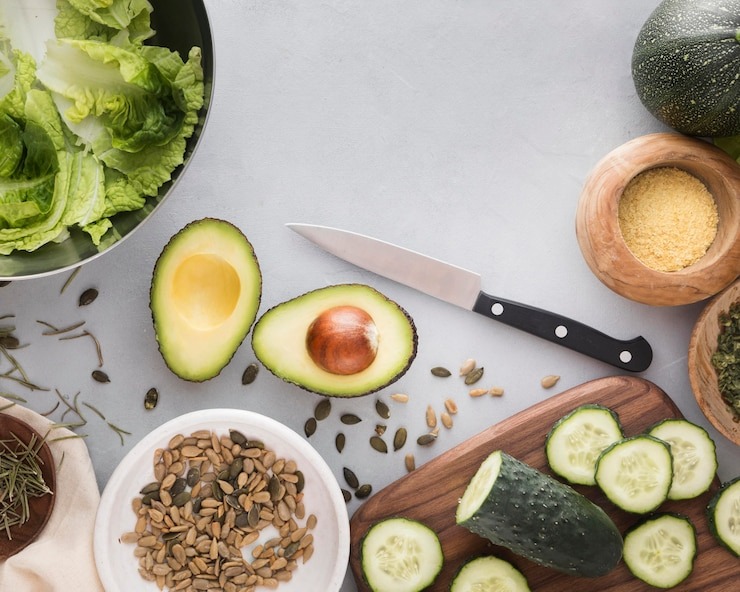The ketogenic diet, commonly referred to as the keto diet, is a high-fat, low-carbohydrate eating plan designed to shift the body’s metabolism from burning glucose to burning fat.
This metabolic state, known as ketosis, occurs when carbohydrate intake is significantly reduced, prompting the liver to convert fat into ketones, which serve as an alternative energy source for the brain and body.
Typically, a standard keto diet consists of approximately 70–75% fats, 20–25% protein, and only about 5–10% carbohydrates.
This drastic reduction in carbs distinguishes the keto approach from other dietary regimens. The primary goal is to promote weight loss and improve overall health by utilizing fat as the main energy source.
In addition to weight management, many adherents report enhanced mental clarity, increased energy levels, and reduced hunger pangs.
The diet has also gained attention for its potential therapeutic benefits in managing conditions such as epilepsy, type 2 diabetes, and metabolic syndrome.
Understanding the principles of the keto approach is essential for anyone looking to adopt this lifestyle effectively.
Benefits of Low-Carb Ingredients for Keto

Stabilizing Blood Sugar Levels
Low-carbohydrate foods typically have a lower glycemic index, meaning they do not cause rapid spikes in blood sugar.
This stability can lead to improved energy levels and reduced cravings.
Additionally, low-carb ingredients often contain higher amounts of fiber and healthy fats, contributing to satiety and helping individuals feel fuller for longer periods.
Benefits for Weight Loss
This satiety is particularly beneficial for those who struggle with hunger while trying to lose weight.
Furthermore, many low-carb foods are nutrient-dense, providing essential vitamins and minerals without the excess calories associated with high-carb options.
Promoting Overall Health and Well-being
Incorporating low-carb ingredients into a keto diet not only supports weight loss but also promotes overall health and well-being, offering long-term advantages beyond body composition.
Low-Carb Ingredients to Incorporate into Your Keto Diet
When embarking on a keto journey, selecting the right low-carb ingredients is crucial.
Popular choices include leafy greens such as spinach, kale, and arugula, which are rich in vitamins and minerals while extremely low in carbohydrates.
Cruciferous vegetables like broccoli, cauliflower, and Brussels sprouts are also excellent options due to their high fiber content and versatility.
In addition to vegetables, healthy fats play a pivotal role.
Avocados, olive oil, coconut oil, and nuts like almonds and walnuts provide essential fatty acids that support heart health.
Dairy products like cheese and heavy cream can be included in moderation, offering both flavor and fat content without excessive carbohydrates.
By incorporating these low-carb ingredients into daily meals, individuals can create satisfying dishes that support their keto lifestyle.

How Low-Carb Ingredients Aid in Ketosis
According to research, the primary mechanism by which low-carb ingredients facilitate ketosis is by limiting glucose availability in the body.
When carbohydrate intake is restricted, insulin levels decrease, prompting the body to utilize stored fat for energy instead of glucose.
Low-carb ingredients help individuals stay within their carb limits while still enjoying a diverse range of foods.
Many low-carb ingredients are also high in healthy fats and proteins, further supporting ketosis.
For example, foods rich in medium-chain triglycerides (MCTs), like coconut oil, can accelerate ketone production.
This not only enhances energy levels but also helps achieve deeper states of ketosis more quickly.
By strategically incorporating low-carb ingredients into meals, individuals can optimize their chances of successfully entering and sustaining ketosis.
Recipes Using Low-Carb Ingredients for Keto
Creating delicious meals using low-carb ingredients is one of the pleasures of following a keto diet.
- Cauliflower Rice Stir-Fry: Grated cauliflower serves as a rice substitute, sautéed with vegetables like bell peppers and zucchini and protein sources such as chicken or shrimp. Season with soy sauce or coconut aminos for flavor.
- Zucchini Noodles (Zoodles): Used in place of traditional pasta, tossed with pesto sauce and grilled chicken for a satisfying, flavorful meal.
- Spinach and Cheese Omelet: A filling, low-carb breakfast option.
These keto recipes demonstrate that following a keto diet does not mean sacrificing taste or variety; instead, it opens up new culinary possibilities.
Tips for Using Low-Carb Ingredients in a Keto Lifestyle

Meal Prep for Success
Preparing large batches of low-carb dishes can save time during busy weekdays and ensure healthy options are readily available.
Experiment with Flavor
Experimenting with different cooking methods and flavor profiles can keep meals exciting. Roasting vegetables enhances their natural sweetness, while herbs and spices elevate dishes without adding carbs.
Read Labels Carefully
When purchasing packaged foods, it’s crucial to read labels carefully. Many products may contain hidden sugars or high-carb fillers that can disrupt ketosis.
Finding and Using Quality Low-Carb Ingredients for Keto
When sourcing low-carb ingredients, prioritize freshness and nutritional value. Local farmers’ markets often offer fresh produce free from pesticides and chemicals.
Organic options may also be worthwhile for minimizing exposure to harmful substances.
Selecting high-quality fats is equally important. Opt for cold-pressed oils or grass-fed butter to ensure you’re consuming healthy fats without unnecessary additives or trans fats.
When shopping for packaged goods, seek products with minimal ingredients and no added sugars or refined carbohydrates.
By being discerning about ingredient quality, individuals can enhance their health while successfully adhering to a ketogenic lifestyle.

